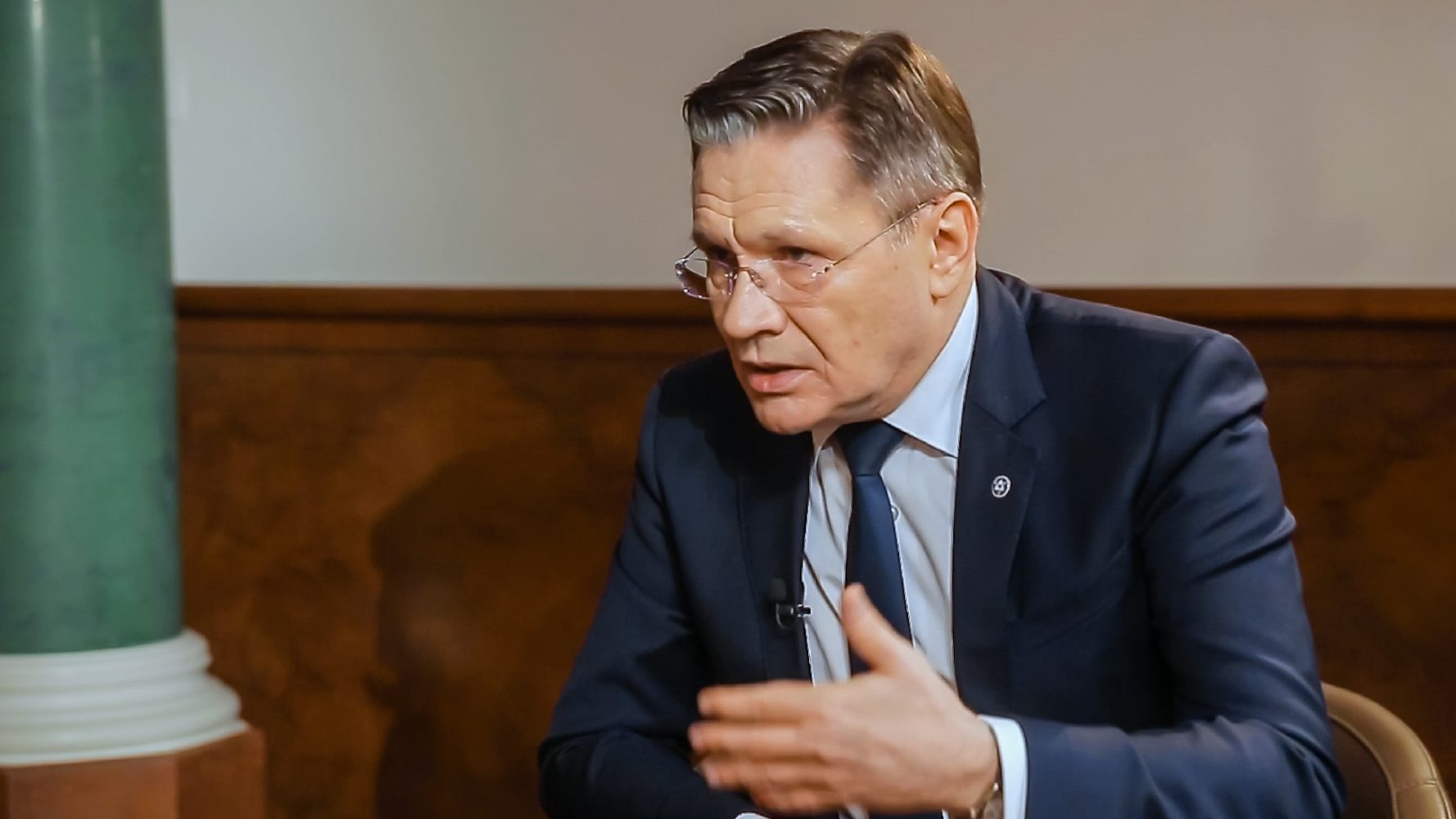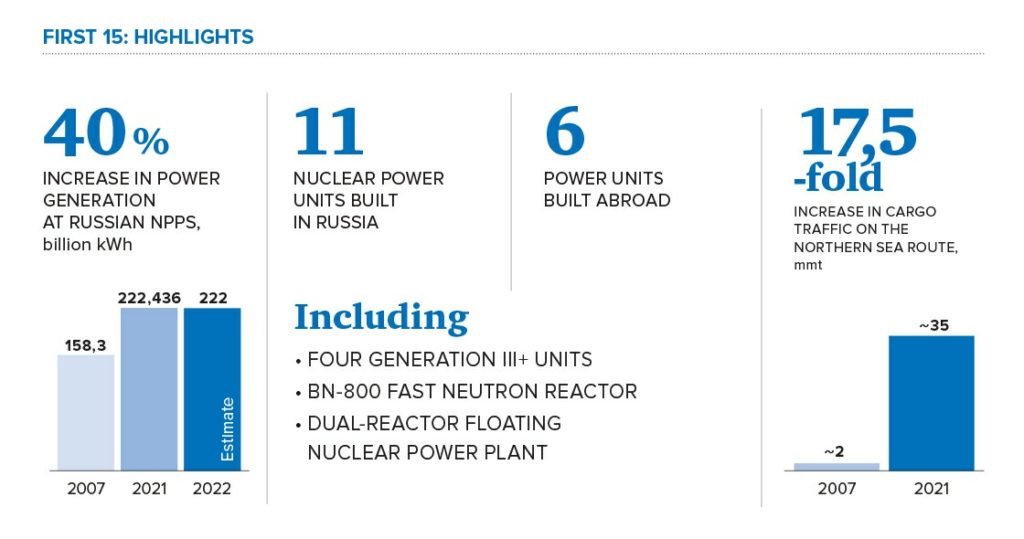
Rosatom Turns 15
back to contentsThis year, the Russian nuclear corporation celebrates its 15th anniversary. Obviously, key Russian nuclear companies existed long before. In 15 years, Rosatom has turned into an integrated holding group, with its operations divided into business units. Our readers had a chance to learn more about Rosatom’s divisions during the year.
On December 1, 2007, a decree establishing Rosatom State Atomic Energy Corporation was signed. It comprised production facilities, research institutes and other sectoral organizations. Much has been done since then: a vertically integrated corporation possessing end-to-end competencies in nuclear energy, from uranium mining to operation of nuclear power plants, was set up. Power generation has increased considerably; new reactors have been built in Russia and abroad. “The corporation places a priority on implementing large-scale programs in research, nuclear medicine, environmental protection, ship and aircraft building, and digital technology. Much is done for economic development of the Arctic territories and the Northern Sea Route. And, of course, the nuclear sector makes a truly unparalleled contribution to maintaining nuclear parity and defense capabilities of our country,” the Russian president said in his anniversary address.
“At that time, 15 years ago, the first thing we had to do was to integrate huge expertise and immense potential gained by the founders of the first atomic project into a newly established government corporation. The second thing was to augment what they had created. We started with new businesses and then proceeded with import substitution and major projects to make our country technologically independent,” Director General of Rosatom Alexey Likhachev described the company’s progress in an interview to Russia 24 TV channel.
New businesses are based on the long-existing sectoral competencies. Composite materials were initially used in gas centrifuge rotors and then found their way into civil, aircraft and even sports engineering.
Nuclear icebreakers were initially placed under management, and then a program was launched to build a series of powerful icebreakers. Three of them are already on duty on the Northern Sea Route. Rosatom now administrates navigation on this shortest route from Europe to Asia, escorts ships carrying cargo for Arctic projects and delivering goods to consumers, and provides cabotage services between western, northern and eastern Russian ports. A new area of focus is floating nuclear power plants with RITM‑200 reactors.
Fuel cells were developed for space programs — now they are used in hydrogen electrolyzers. Both electrolyzers and hydrogen are considered to be promising segments of the energy market. Available expertise in energy storage facilities is now applied to produce lithium-ion batteries. In Kaliningrad, Rosatom is building a gigafactory that will have a capacity sufficient to equip 50,000 electric vehicles per year.
Another example is mathematical modeling and supercomputers. Rosatom has developed proprietary software and powerful hardware for in-house applications. Now these systems are of interest to third-party consumers. For example, Logos Software can model heat, fluid and gas transfers, strength of materials and so on, both in artificial (mechanical engineering) and natural (hydrogeology) environments.
Some areas of focus are relatively young, and wind generation is one of them. With its domestic production facilities and local production of key components, Rosatom is today a key player of the Russian renewable energy market and a member of international alliances. Six wind farms built by Rosatom operate in three Russian regions, and more are under construction.

Finally, Rosatom positions itself as a corporation of knowledge — it engages in fundamental and applied research, collaborates with colleges and universities, and takes part in international projects. The most vivid example is ITER, which cannot be completed without Russia. Russia is where the idea of tokamak was conceived and where ITER superconductors and gyrotrons are produced. Just recently, unparalleled ultra-powerful magnets were shipped to the ITER site. “This international project brings together our partners from the People’s Republic of China, as well as from the United States. For the moment, ITER remains politically neutral. Universal values do exist, and I hope that, among others, our Western neighbors realize that accumulation of knowledge on our planet cannot be put at risk of current political ambitions or personal sympathies and antipathies of certain European and American politicians,” Alexey Likhachev shared his hopes in the anniversary interview.




